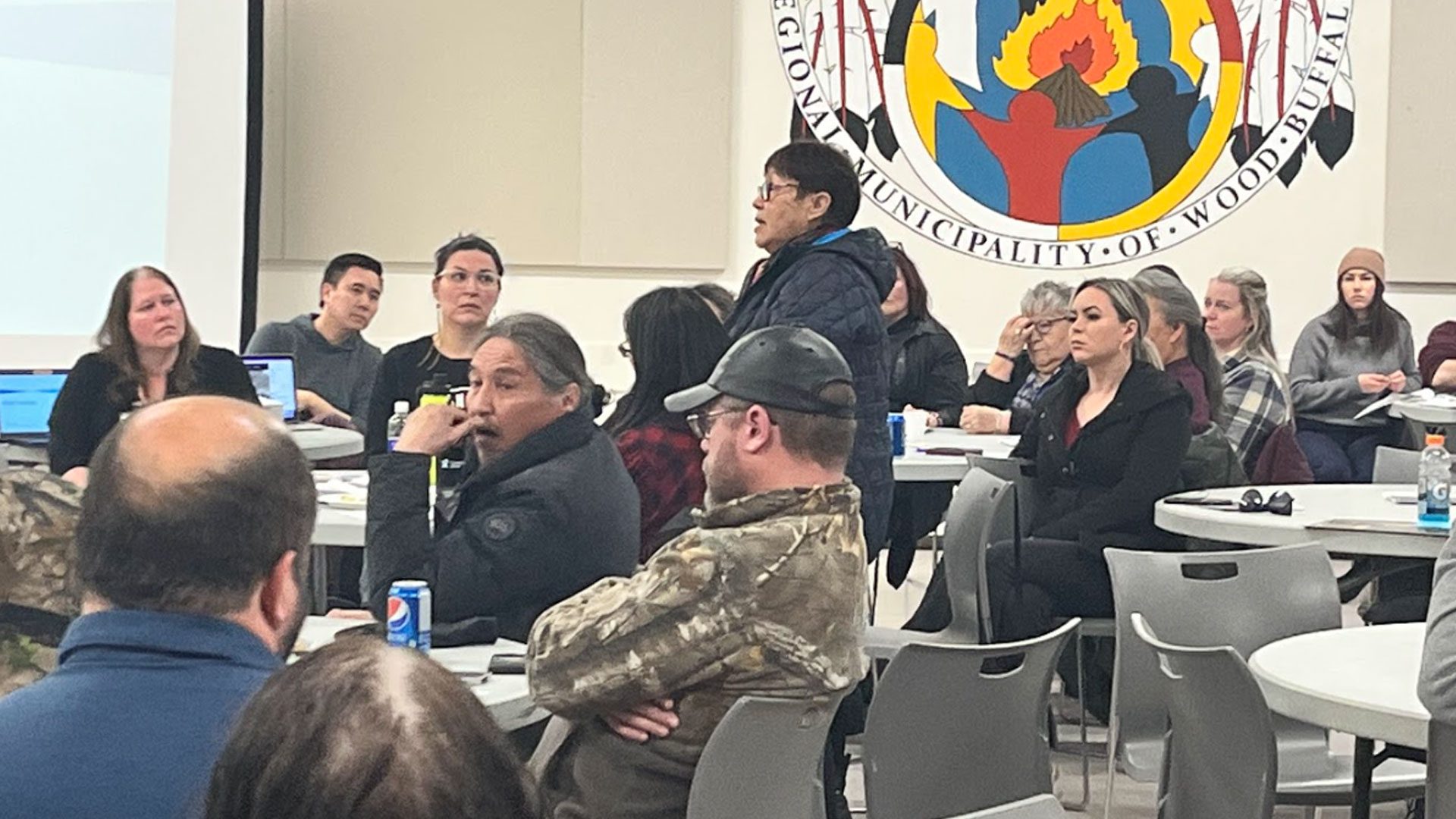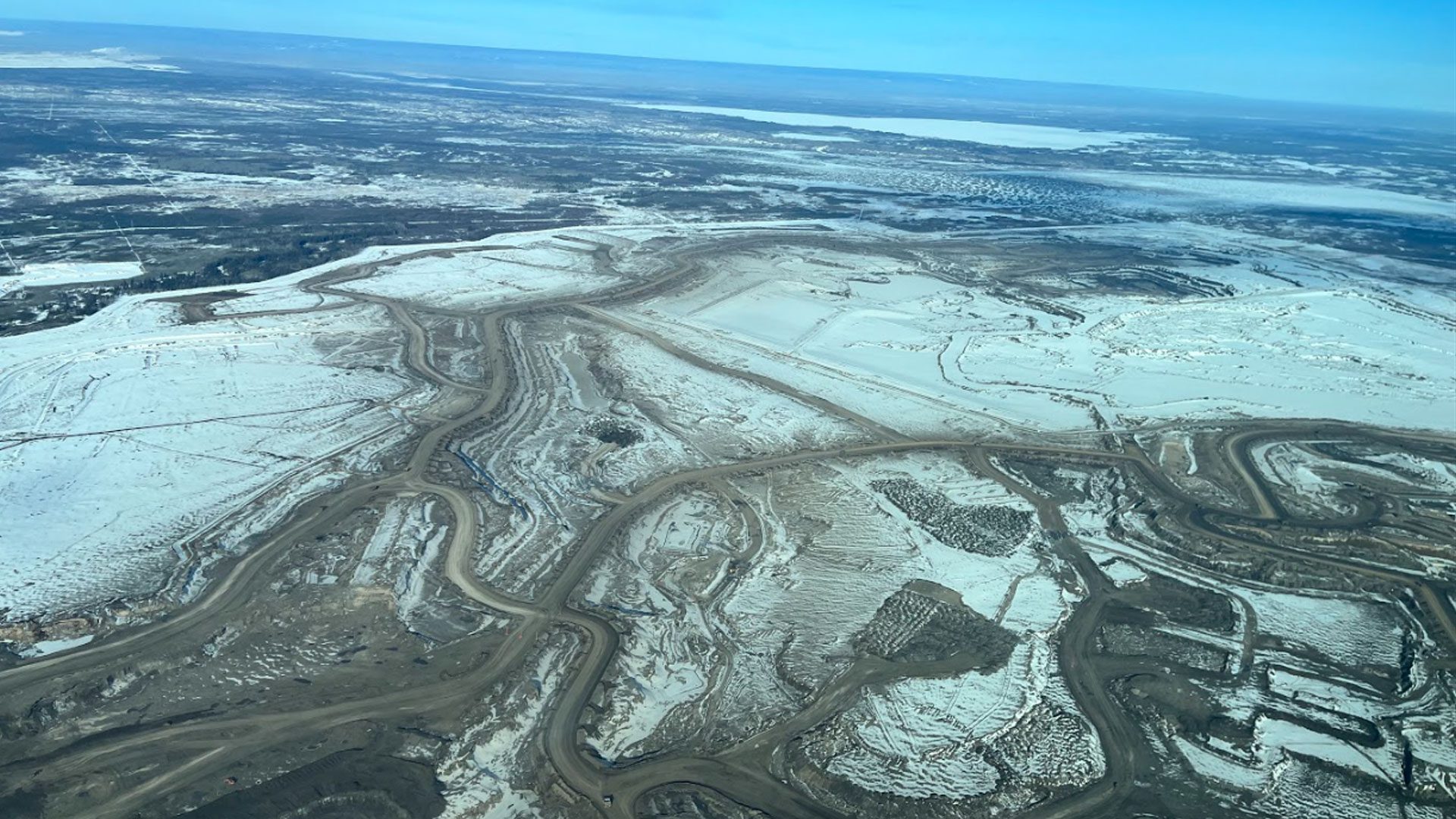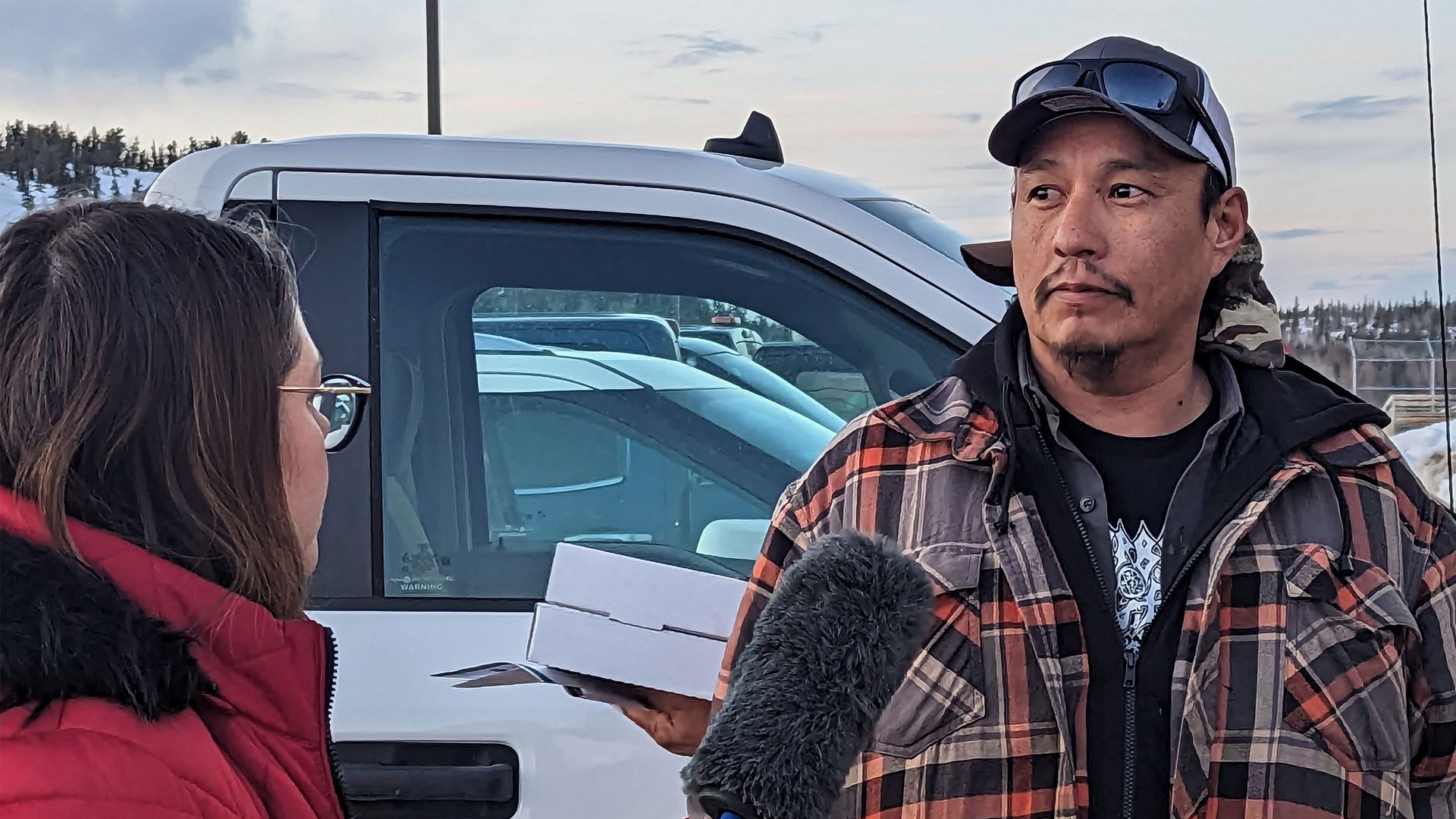Imperial Oil’s attempt to calm the concerns of Fort Chipewyan residents, including two First Nations and a Métis community about tailings pond leak fell flat with the crowd on Wednesday.
The company lost the tobacco it meant to offer for prayer and the evening meeting in Fort Chipewyan began without a land acknowledgement – something several people pointed out.
Imperial executives came to Fort Chipewyan to answer questions about the size spill that could leak into Firebag River and empties into the Athabasca River.
“Water is life,” Elder Alice Rigney told the crowd of about 80. “If you don’t have clean water to sustain the habitat that is our food we are killing ourselves. That is why you’re hearing all the frustration.“We are concerned. We know what has been coming down stream.”

For nearly a year, according to reports by the Alberta Energy Regulator [AER], water contaminated with dangerous levels of arsenic, dissolved metals and hydrocarbons from the Kearl tailings pond have been seeping into nearby Crown land and concerns about seepage into lakes and streams where people fish and hunt.
The spokesperson for Imperial Oil, Lisa Schmidt told APTN News that their testing was not showing any issues with the water.
“Our monitoring and water sampling data has been stable and have shown no impact to local water ways or drinking water,” said Schmidt.
Indigenous communities were unaware until an incident in February where an overflow on a drainage pond spilled millions of litres of polluted water at the site – roughly 80 km from Fort McMurray and 260 km from Fort Chipewyan.
AER issued an environmental protection order as a result of the spill.
The environmental impact of the tar sands mining can be seen in aerial pictures. The open-pit mines scar the earth.
Etched into the landscape are cut lines where further mining has been approved.

Google map’s satellite view clearly shows some of the impacts on the landscape.
The tailings ponds in northern Alberta would fill more than 500,000 Olympic swimming pools. These are so toxic, ducks and other birds have to be prevented from going near them, according to earlier stories by The Canadian Press.
The project is surrounded by tributaries that drain into Lake Athabasca and pass by many First Nations and Métis communities along the way.
Jamie Long, Imperial’s vice-president of mining, offered an apology for both the lack of tobacco and the poor communication.
“I will start by apologising for why we are all here today. I want to share that we take the situation very seriously,” said Long.
In a community bulletin presented at the meeting, Imperial said “a minor amount of tailings pond water has leaked.”
At the meeting, the company did not provide test results but showed it had been sampling along the dike of the tailings pond.
The company also said it has installed additional pumps near the leak sites, as APTN News has reported.

Long said they have more than 200 people working on remediation.
The meeting lasted about an hour and 40 minutes.
Chief Allan Adam of Athabasca Fort Chipewyan First Nation (ACFN) had warned the scheduled hour would not be enough time.
“Look at the mess you are in now,” said Adam.
Several people said they were disappointed Imperial had taken nine months to tell them about the leak and was giving them so little time to come together as a group.
“The question is why did this take so long?” said Raymond Cardinal.
“You say you want to work together but yet you refuse to let our people on-site to go do monitoring.”
Imperial has said it offered First Nations the ability to do onsite monitoring, but according to ACFN it hasn’t happened yet due to site safety requirements.
Read More:
First Nation in northern Alberta reports Kearl mine leak ‘worse’ than expected
Mixed messages on whether Kerle oil leak harmful to wildlife in Alberta
Toxic tailings leak ongoing concern for First Nation in northern Alberta
“You want to build trust and yet you fail to abide by your agreement. And the [AER], the federal government, why aren’t they here?” Cardinal asked.
Some residents asked questions about data and how they can access information about heavy metals and arsenic levels year-over-year.
Long said that data is shared with the leadership of Indigenous communities who have information-sharing agreements. Not all Fort Chipewyan residents have access to this information and not every resident is a member of the communities that have some of the testing data.
There is some monitoring and reporting through the AER and Imperial, but the company confirmed comprehensive data is not available to the public.
Christine Randall, a spokesperson for Imperial, said the company remains committed to rebuilding trust with Fort Chipewyan and surrounding communities.
“Our water sampling and testing shows that there is no contamination in the water regarding this incident,” said Randall, a communications and community investment manager. “This was a first step.
“There’s more we need to do in terms of engaging with communities and providing information we know they want and they should expect.”
Mike Mercredi found the meeting disappointing but said he was proud of his community for coming and speaking out.
“I just would like them to stop and leave,” he said about Imperial. “They kept the plant running while it was leaking…and at the cost of what?
“If this keeps up we are probably going to be the first oil sands environmental refugees.”
This story has been updated 03/27/2023 with comments from Imperial Oil.









